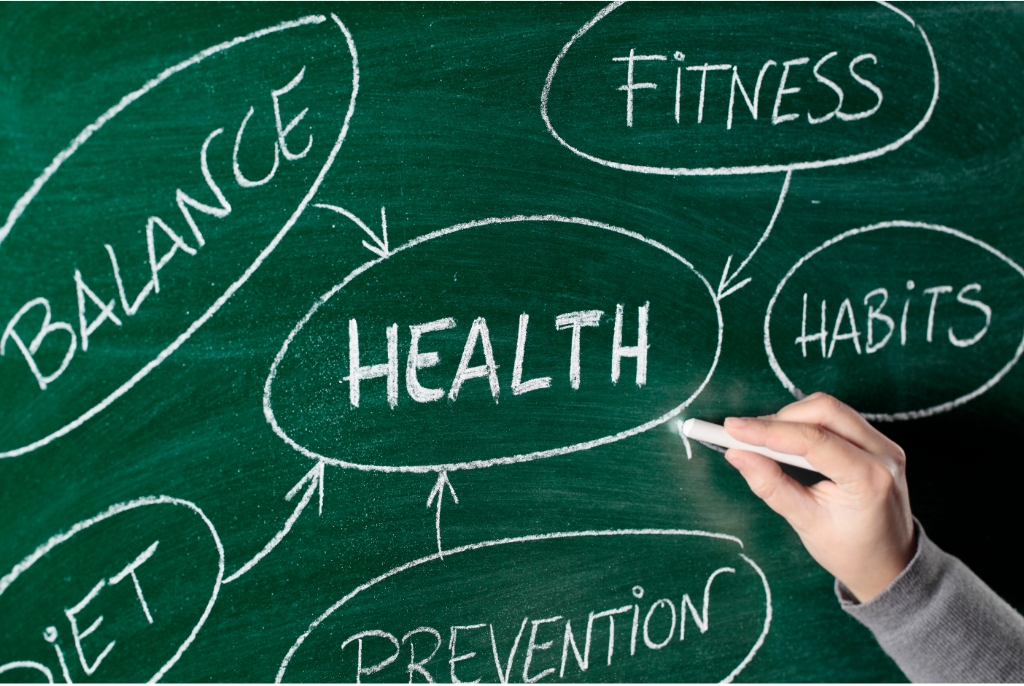
When a flower doesn’t bloom, you fix the environment in which it grows, not the flower. – Alexander den Heijer
Mental disorders, especially depression, are a growing crisis. In fact, a recent 2023 national poll suggests that rates of depression have reached an all-time high. Mental disorders are now among the leading causes of disability in the world.
Although we have many treatments for depression, like antidepressants and psychotherapy, and they do work for some people, the reality is that they fail to work for far too many other people.
This begs the question, why?
As Dr. Chris Palmer, author of Brain Energy says, “In the end, it’s because no one can answer a simple question, ‘What causes mental illness?’”
In Brain Energy, Dr. Palmer explains that all mental disorders share a root cause: metabolic dysfunction. This dysfunction begins at the cellular level in our mitochondria. In other words, mental disorders are metabolic disorders of the brain.
What is metabolic health?
Metabolic health refers to the body’s ability to process nutrients for energy, and how efficiently our mitochondria–the energy generating organelles–operate.
Some people may be familiar with the word “metabolism” and its connection to weight. While metabolic health is indeed about metabolism, it’s far more complex than the numbers you see on the scale. In fact, metabolism, which is the set of chemical reactions that occur within cells to sustain life, affects nearly every aspect of both physical and mental health.
Metabolism and mitochondria can explain all of the symptoms of mental illness. In fact, all mental states, even normal ones, relate to metabolism.
What influences our metabolic health?
Lifestyle choices directly influence metabolism and mitochondria. Everything from diet, exercise, sleep, stress, substance use, and social connection impacts metabolic health.
While it’s true that many things are not in our control, achieving and maintaining good mental health may require us to maximize our influence over things we can control.
Simply acknowledging the impact of lifestyle factors on our mental health is a powerful first step in beginning to heal from mental disorders. To address problems of metabolism, a comprehensive approach is usually necessary. Simple fixes, like taking a pill, may help sometimes, but often it’s not that easy.
What can you do today to improve your future health?
Just emphasizing the connection between metabolic health and mental health is a big first step. Brain Energy is an empowering call to action. It gives us strategies – like diet, exercise, and sleep hygiene, that we can use to influence our health. Just like the brain itself has plasticity, and can change, metabolic health is also changeable, especially when we eliminate lifestyle factors that may be affecting us negatively.
We know living with a mental illness is difficult. It can make even simple tasks like getting out of bed or brushing your teeth into challenges. Your goal should be to focus on moving in the right direction, and asking for help when you need it. And if making lifestyle changes sounds overwhelming, try to think about it like this: imagine the steps you’d take to care for a pet, or even a plant. In the case of a plant, you might need to water it every other day, and position it for optimal sunlight. A pet requires a lot of daily care to survive. With a dog, you might be sure to incorporate free-range movement throughout the week, by taking him to a park. If you’ve had an especially long work-week, and didn’t make it to the park, then you might get the extra movement for your furry friend by making his night-time walks longer.
Picture your metabolic health similarly–it’s something that requires constant attention. It’s not about being perfect every single day. It’s about making your best efforts as often as possible. Part of that means knowing what to do, and that’s what the Brain Energy theory is all about.
“Oftentimes, people who suffer from serious mental disorders may feel like it’s impossible to improve their health. They have often been told that they have chronic, lifelong disorders. But they can do it! I continue to hear from people almost daily from around the world who are improving their mental health using metabolic treatment strategies,” says Dr. Palmer.
When treating a serious mental illness, you should work with a competent clinician. Ask your doctor or health care practitioner to help you develop a metabolic treatment plan that suits your unique needs. It may take time to figure out which treatments are right for you, and the goal should always be to focus on interventions that improve mitochondrial function and/or increase the supply of mitochondria.
Your mitochondria know what to do. When you give them what they need, they will take care of you!
Disclaimer: This article is for educational purposes only and is not medical advice. You should consult with your healthcare provider before starting any treatments for any medical conditions.
Meredith Galaif has been lucky enough to discover Brain Energy, and learn about the importance of metabolic health as a young adult. She wants to help spread the knowledge of how mental health and metabolic health are closely intertwined, and empower people to take an active, rather than passive, approach to their health. She's extremely passionate about disruptive healthcare, and working with companies who are providing better alternatives to the traditional standards of care. Meredith has enjoyed working for innovative health practices and startups including Virta Health, Everly Health, and Rehab Without Walls. She seeks to create seamless healthcare experiences for everyday individuals. When she's not working or volunteering for the Brain Energy movement, music and outdoor physical activity are her go-to activities. She plays guitar and collaborates with solo musicians for gigs, and pop-up bands through Austin Music School Femme Rock. Her primary music influences include John Frusicante, Elliott Smith, the Red Hot Chili Peppers, and Guns ’N' Roses. Meredith also loves to play tennis, bike around the city, and paddle board on the Colorado river.


